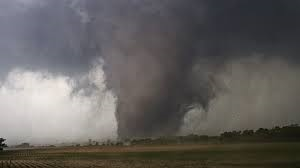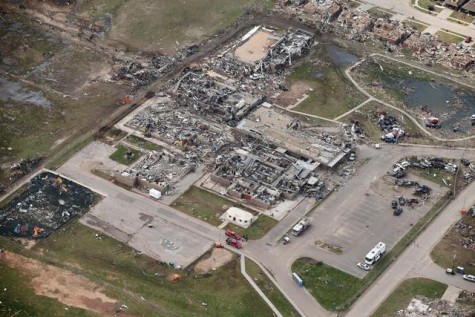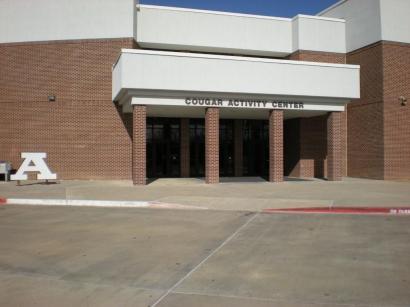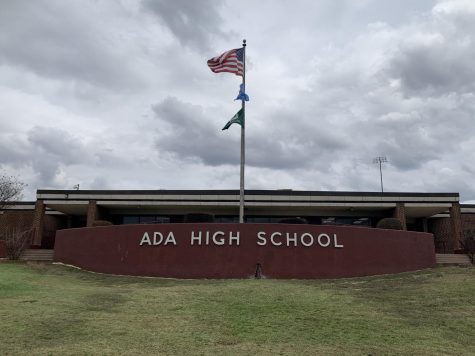Tornado Season: What’s your plan?
Tornado season is right around the corner. This is the time of year many Oklahomans start to worry about and prepare for possible tornadic activity. Oklahoma, situated in the midst of tornado alley, which runs North to South, covering the northern region of Texas, Oklahoma, Kansas, Nebraska, Iowa, the eastern edge of Colorado, the southwest tip of south Dakota, and the southern edge of Minnesota, is a prime target for tornadoes and the disastrous destruction that often accompanies them.

In 2013, Moore Okla. was struck by a devastating EF5* tornado that severely damaged two elementary schools, Briarwood Elementary School and Plaza Towers Elementary School.

The tragic student deaths that occurred as a result of this tornado have prompted many schools across the state to rethink their tornado policies and drills.
Ada High School is no exception, as administration has recently developed additional plans to ensure student safety in the event of a tornado during school hours.
“We really have two plans. Plan A is if we know in advance, we will go down to the Ada Cougar Activity Center and get under ground, under the gym. That’s our best plan. Plan B is, if it comes up on us, we will call for the girls to make their way down to the basement, then once all of the girls are down there, we will call for the boys to make their way down there. We can get down there quicker than we can the activity center. That’s why it’s plan B,” stated Jeff Maloy, Ada High School principal, when asked what precautions Ada High would take. Tornado drills are held once per semester.
According to Maloy, unlike many other Okla. schools, AHS has not faced many tornado threats. “Since I have been here there has only been one time that our drill has actually been initiated. It wasn’t during the school day, thankfully, it was during a basketball game during the evening. We evacuated the stands and got everyone down in the hallways under the gym.”

Ada High continues to plan for student safety. The recent school bond passing will allow the construction of safe houses, which will be built on the North side of the main building. Once completed, these safe houses would replace the current tornado evacuation procedures.
Ada High students and faculty also practice their own tornado plans when not at school.
Paige Rhoads (AHS student): “Me and my cousin jump in the truck and go after the tornado.”
Brandon Worcester (AHS student): “When there is a tornado I got to my mom’s house because she has a cellar.”
Shari Manwell (AHS English teacher): “I take my kids to the center of the house. While my husband stands on the front porch and watches the tornado.”
Pamela Wakefield (AHS Culinary Arts teacher): “If I’m inside then I go to my basement, but if I’m outside I would jump in a ditch.”
In the event of a tornado, there are a few suggested precautions. Locate a local storm shelter. If a tornado watch is in effect, tune into the local weather for updates. Also, have a family tornado plan so everyone knows exactly what to do if there is a tornado. It would be wise to have a practice drill at least once a year, just to make sure everyone knows the plan.
It is a good idea to stock an available storm shelter with supplies such as a flashlight, radio, water, and sleeping bags. If a storm shelter is not available, find an enclosed room with no windows. This room could be stocked with things like a mattress, sleeping bags, pillows, or thick blankets to provide protection from flying debris.
Recognizing the signs of a tornado may also be a helpful protection tool. Signs include:
- Strong persistent rotation in the cloud base
- Whirling dust or debris on the ground under a cloud base
- Hail or heavy rain followed by either dead calm or a fast, intense wind shift
- Day or night – Loud, continuous roar or rumble which doesn’t fade in a few seconds like thunder
- Night – Small, bright, blue-green to white flashes at ground level near a thunderstorm. These mean power lines are being snapped by very strong wind, maybe a tornado.
- Night – Persistent lowering from the cloud base, illuminated or silhouetted by lightning
http://youtu.be/xTpceWd8UE4
Whether at school or home, being informed and prepared about tornado evacuation plans, could save a life, and that life might just be your own.

Aaron Compton is a Junior at Ada High school and has been a Cougar Call staff member for the past three years. He is currently serving as senior editor...









ASHLEY • Mar 25, 2015 at 9:41 am
Very good article Aaron!
Brittany Prince • Mar 24, 2015 at 10:57 am
I think that our school developed a good plan to keep our students safe.